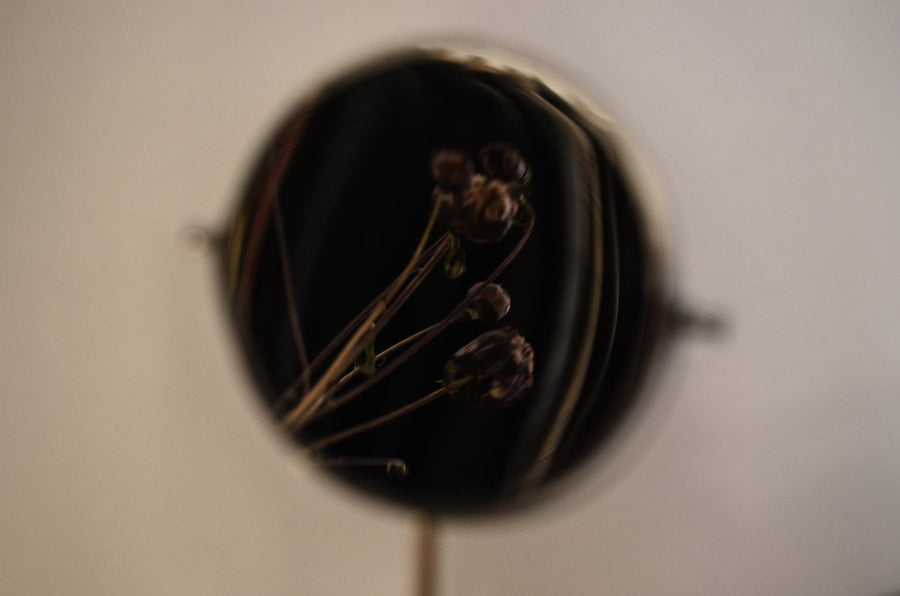Exophytic Fibroid: Definition, Symptoms, Types, & Treatment

By OBGYN Dr. Kenosha Gleaton
What is an Exophytic Fibroid?
Leiomyomas, also known as fibroids, are noncancerous tumors found in and around the uterus. [1] Fibroids are the most common benign gynecological tumor seen in those assigned female at birth (AFAB) prior to menopause. Exophytic fibroids grow from the inner or outer surface of the uterus. These differ from intramural fibroids, which grow inside the muscular uterine wall. [2]
Types of Exophytic Fibroids
Exophytic fibroids can be either subserosal or submucosal. Subserosal fibroids grow from the outer wall of the uterus and extend into the pelvis or surrounding space. Subserosal fibroids are one of the more common types of fibroids. Submucosal fibroids grow inside the endometrial cavity. [3] These are the least common type of fibroid but are the most likely to cause symptoms. Exophytic fibroids can sometimes be pedunculated, which means there’s a stalk that connects the fibroid to the uterus. [3]
Symptoms of Exophytic Fibroids
Not everyone with fibroids will experience symptoms, however, it is possible for some people to experience progressive, recurrent symptoms. The most commonly experienced symptoms include [1]:
- Pelvic or abdominal pain
- Abdominal pressure
- Abnormal vaginal bleeding
Exophytic fibroids can also make it difficult to conceive, lead to pregnancy complications, cause frequent urination, painful sex, lower back pain, constipation, and more. [4] Additionally, submucosal fibroids can potentially prolapse into the cervical canal or vagina. [3]
Causes and Risk Factors of Exophytic Fibroids
Although fibroids are very common, we don’t yet know the exact cause behind them. Some researchers believe that genetics play a role, as there is a correlation between people with fibroids and specific genetic mutations. [1] There is also evidence that connects some hormones, such as estrogen and progesterone, to the growth of fibroids. There are some specific factors that put someone at an increased risk of developing fibroids, such as race, use of hormonal birth control at an early age, increased weight, and early menarche (age of first period). [1,4] Leiomyomas are diagnosed in nearly 70% of white females and more than 80% of black females, with black females experiencing more symptoms. [1]
How are Exophytic Fibroids Diagnosed?
Fibroids are often initially diagnosed after a comprehensive physical exam and clinical history. If your healthcare provider notices irregularities in the shape or feel of the uterus, they may suspect fibroids. [5] Using ultrasonography (USG) is often the most accessible and easiest imaging test for confirming thyroids, which in some cases can help distinguish between submucosal, subserosal, and intramural fibroids. [5] USG scans can be transabdominal or transvaginal. If fibroids are very small, transvaginal may be more useful. Other imaging, such as magnetic resonance imaging (MRI) can also be used when determining the state of the fibroid(s) or determining appropriate treatment options. Exophytic fibroids will extend inside of the uterine cavity or outside of the uterus and into the pelvis and may or may not be pedunculated. [3]
How to Treat Exophytic Fibroids
There are many different options for treating or managing fibroids that are dependent on the size and location of the growths, as well as family planning goals. Medical management of fibroids is not always required, especially if the person is asymptomatic. However, impacted fertility, bothersome symptoms, or concerning size and location may prompt someone to get treatment. [4-5]
Watchful Waiting and Medications
First, some healthcare providers may recommend “watchful waiting” which essentially means leaving the fibroids alone, but keeping an eye on them for any concerning changes. [4-5] Often fibroids will grow slowly, if at all, and will shrink after menopause. In some instances medications may be used to target specific hormones. These medications may be able to shrink fibroids or prevent them from growing any further. Some medications can also target fibroid symptoms, such as heavy bleeding. [4-5]
Treatments and Surgery
Another option for treating exophytic fibroids is MRI-guided focused ultrasound surgery, which preserves the uterus and requires no incisions. Fibroids are targeted with sound waves to destroy the tissue. Fibroids may also be destroyed through radiofrequency energy, targeting blood vessels, freezing the fibroids, and other methods. [4-5] Traditional surgical options include the removal of the fibroids, known as a myomectomy, or removal of the uterus, known as a hysterectomy.
Treatment options can vary based on the location of the fibroid, so it’s best to speak directly to your healthcare provider to better understand your options.
When to Seek Medical Attention
Fibroids are not cancerous, grow slowly, and rarely interfere with pregnancy. Unless you are in pain or are experiencing other symptoms, such as heavy bleeding, fibroids aren’t necessarily a cause for concern. [1,4,5] If you’re worried about your fertility or have specific questions about fibroid treatment or diagnosis, you should speak to a healthcare provider.
In some rare cases, pedunculated fibroids can twist or prolapse. If you are experiencing any pain, vaginal bleeding, or discomfort, you should seek medical attention.
How Natalist Can Support Your Journey
Fibroids are fairly common in people assigned female at birth of reproductive age. While fibroids are usually not a cause for concern, they may make it more difficult to conceive. Some data shows that some vitamins, such as vitamins D, A, B3, E, and K, may improve the size or symptoms of uterine fibroids. [6] If you are looking for vitamins, supplements, and other products to support your fertility, pregnancy, or postpartum journey, Natalist can help. Shop all Natalist products →
References:
- Florence AM, Fatehi M. Leiomyoma. [Updated 2023 Jan 4]. In: StatPearls [Internet]. Treasure Island (FL): StatPearls Publishing; 2023 Jan-. Available from: https://www.ncbi.nlm.nih.gov/books/NBK538273/
- Lipman, J. Exophytic Fibroids Explained. Atlanta Fibroid Center. April 13 2022. URL. Accessed June 2023.
- Wilde S, Scott-Barrett S. Radiological appearances of uterine fibroids. Indian J Radiol Imaging. 2009;19(3):222-231. doi:10.4103/0971-3026.54887
- Uterine Fibroids. Cleveland Clinic. August 24 2020. URL. Accessed June 2023.
- Uterine Fibroids. Mayo Clinic. September 21 2022. URL. Accessed June 2023.
- Ciebiera M, Ali M, Zgliczyńska M, Skrzypczak M, Al-Hendy A. Vitamins and Uterine Fibroids: Current Data on Pathophysiology and Possible Clinical Relevance. Int J Mol Sci. 2020;21(15):5528. Published 2020 Aug 1. doi:10.3390/ijms21155528
Reach Out, We're Here
Have questions about your order or products? For the speediest answer, check out our FAQ section. Need something else? Come find us below.
Please keep in mind our regular business hours; Monday-Friday, 9am-5pm CT.
Customer Support
support@natalist.com
Press Inquiries
media@everlyhealth.com
Business & Partnerships
team@natalist.com
Affiliates + Influencers
team@natalist.com
Job Openings
Careers Page
























